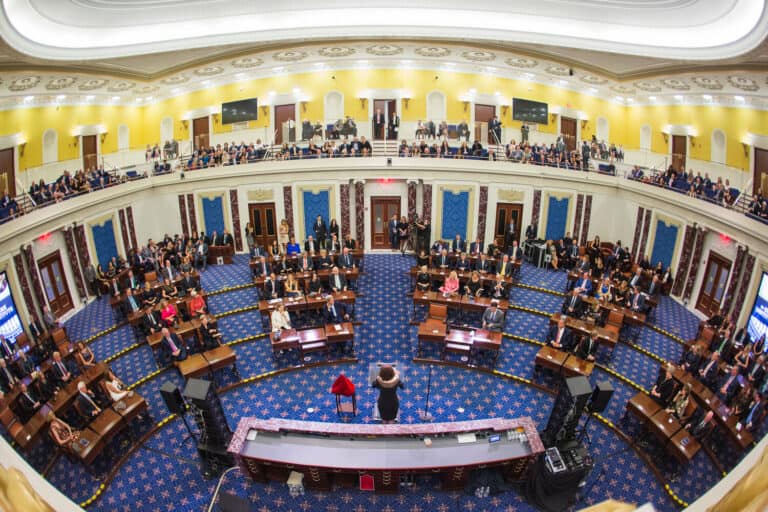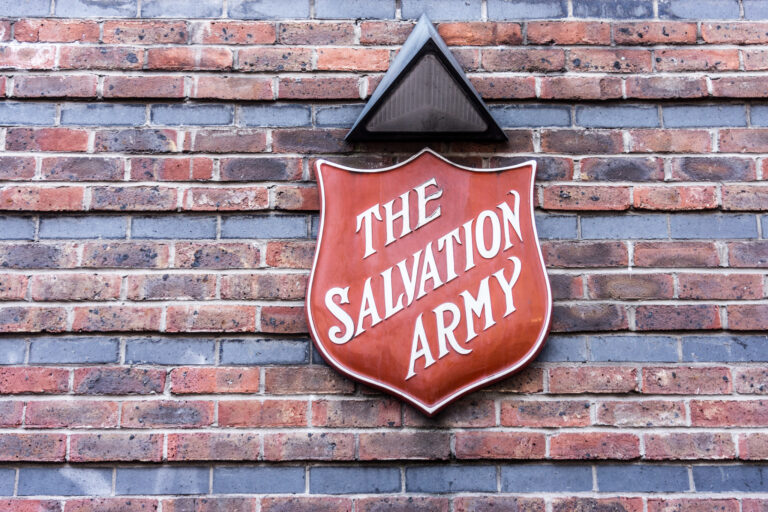
Jon Levitan is a student at Harvard Law School and a member of the Labor and Employment Lab.
Analysis of the NLRB’s decision last week to save Scabby the Rat (Lippert Components Inc., 371 NLRB No. 8 (2021)), which Maxwell wrote about last week, continues to roll in. Meagan Day, in Jacobin, celebrated the decision, which she said turned away a “pathetic…attempt at extermination” by former NLRB General Counsel Peter Robb. Day noted that the union at issue in Lippert was the International Union of Operating Engineers (IOUE) Local 150, which fittingly was the very first local to utilize an inflatable rat on the picket line (Day included a picture of the first Scabby, mounted upon a yellow car with “RAT PATROL” painted on the side). The rat became Scabby after the IOUE held a naming contest, and the rest was history. As she expressed relief that Scabby has survived, Day warned, in the headline, that Scabby’s “enemies never sleep.”
Speaking of Scabby’s enemies, a group of management-side labor lawyers at Morgan Lewis—led by former NLRB chairman and current Morgan Lewis partner Phillip Miscimarra—wrote up an analysis of the Lippert decision for JDSupra. The authors described Scabby as “a 12-foot inflatable rat…of considerable notoriety for its widespread appearances in labor protests.” In the first paragraph the authors criticize the Board’s decision as one that “substantially eroded the protection given to ‘neutral’ parties when unions erect large inflatable rats and other displays targeting businesses that have no direct involvement in the underlying labor dispute.” But they do acknowledge, about halfway through the article, that NLRB precedent already protected the use of Scabby against a secondary employer (Brandon Regional Hospital, 356 NLRB 1290 (2011)) and Lippert would have only meaningfully changed the law if it had come out the other way. Looking ahead, the authors warned employers that Scabby’s survival may just be a harbinger of things to come: the Board’s “decision likely serves as a precursor for even more pro-union decisions in the future as the Board moves from a Republican to Democratic majority.”
The Morgan Lewis team’s warning was well-timed, as Senate Majority Leader Chuck Schumer (D-N.Y.) moved yesterday to begin limited debate on the nominations of union-side labor lawyers Gwynne Wilcox and David Prouty for seats on the NLRB. Ian Kullgreen of Bloomberg Law wrote that Schumer’s procedural move means that final confirmation votes for Wilcox and Prouty could happen in the next few days. Wilcox and Prouty are both expected to be confirmed by the Democratic-controlled Senate.
California regulator’s lawsuit against video-game titan Activision for widespread sex discrimination and harassment, which Fred discussed yesterday, continued to make waves at the company. A group of nearly 1,000 current and former Activision employees slammed their employer’s response to the suit, which was to deny the allegations wholesale (“The [complaint] includes distorted, and in many cases false, descriptions of Blizzard’s past. The picture the [complaint] paints is not the Blizzard workplace of today.”). In the open letter, the workers called Activision’s response to the suit “abhorrent and insulting,” called on the company to take the allegations of discrimination and harassment seriously, and finally called on executive Frances Townsend to step down as the Executive Sponsor of Activision’s women’s employee resource group after Townsend called the allegations “factually incorrect, old and out of context” in an internal email. Elsewhere, an Activision developer noted on twitter that production of World of Warcraft—one of Activision’s flagship products—had ceased entirely after the company’s response to the lawsuit.






Daily News & Commentary
Start your day with our roundup of the latest labor developments. See all
November 2
In today’s news and commentary, states tackle “stay-or-pay” contracts, a new preliminary injunction bars additional shutdown layoffs, and two federal judges order the Trump administration to fund SNAP. Earlier this year, NLRB acting general counsel William Cowen rescinded a 2024 NLRB memo targeting “stay-or-pay” contracts. Former General Counsel Jennifer Abruzzo had declared that these kinds […]
October 31
DHS ends work permit renewal grace period; Starbucks strike authorization vote; captive-audience ban case appeal
October 30
Sweden’s Tesla strike enters its third year; Seattle rideshare drivers protest Waymo’s expansion in the city.
October 29
9th Circuit rejects challenge to NLRB's constitutional structure; preemption challenges to state labor peace statutes
October 28
Two federal unions oppose CBA cancellations, another federal union urges Democrats to end the government shut down, and Paramount plans for mass layoffs
October 27
GM and Rivian announce layoffs; Boeing workers reject contract offer.